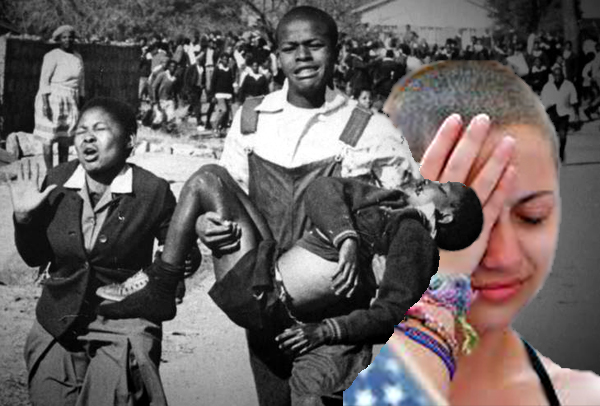 The #NeverAgainMSD may be the first public movement to actually tackle our paralyzed government while confronting and beating such behemoths as the NRA. We should have known. Remember South Africa.
The #NeverAgainMSD may be the first public movement to actually tackle our paralyzed government while confronting and beating such behemoths as the NRA. We should have known. Remember South Africa.
Hector Pietersen is one of the most revered persons in South African history. He moved the struggle against apartheid further along in one day than it had in the previous 100 years. He died doing so, at 12 years old.
Students – and many very young students – were demonstrably the reason apartheid ended when it did in South Africa.
Pietersen was in the front line of a march by primary school students protesting the apartheid government. They marched among giant army tanks and SWAT-like soldiers armed to the teeth with tear gas, grenades and assault weapons.
He was in the front. He was shot in the head.
Pietersen did not run away when the army confronted his class. He didn’t hide behind a building or lie face down on the ground pretending to be dead. He stayed in the front. We’ll never know for sure why he was there, but his legacy suggests he was there because he wanted to be there.
It was June 16, 1976. Eight years earlier young students from around the country created the South African Students Organisation (SASO), and SASO had recruited more than 300,000 students for the grand June 16 protest. The non-white students were fed up with their education being discounted so that white student education could be improved.
Children in the mandatory school uniforms marched all across the country, in little towns and big ones like Hector’s Soweto.
In 1976 Soweto was the largest city in sub-Saharan Africa, a corral of black where black workers who toiled in the factories, mines and homes of the white people of Johannesburg were herded each night on a train system that was the largest on the continent.
It must have been terrifying for Hector. SASO was outlawed. Admitting to membership not only took you to jail, no matter how young you were, but it could land your parents in jail as well.
Hector wasn’t the first student killed. He was the second. He was marching beside 16-year old Hastings Ndlovu who was the student leader in Hector’s school. Police knew him and shot him first. Hector fell second. Then, hundreds more fell dead in the next tiny few minutes.
Hector is remembered more often than Hastings because of the photograph taken of a relative carrying him away from the massacre. The photograph went as viral as photographs could in the 1970s, through the news media. It galvanized many against apartheid in South Africa and it shocked the world.
Because of Hastings and Hector and many other youth activists (see especially the South African student story of Steve Biko) apartheid started to crumble. Because of Hastings and Hector in particular, U.S. Congressmen were so moved that they overrode President Reagan’s veto of sanctions against apartheid South Africa.
If ever we needed in America something young and effective in our politics, it’s today. The courage needed now, though, isn’t that of marching into a police line. It’s standing up for what’s sensible and right in a society muddled by despair and vengeance.